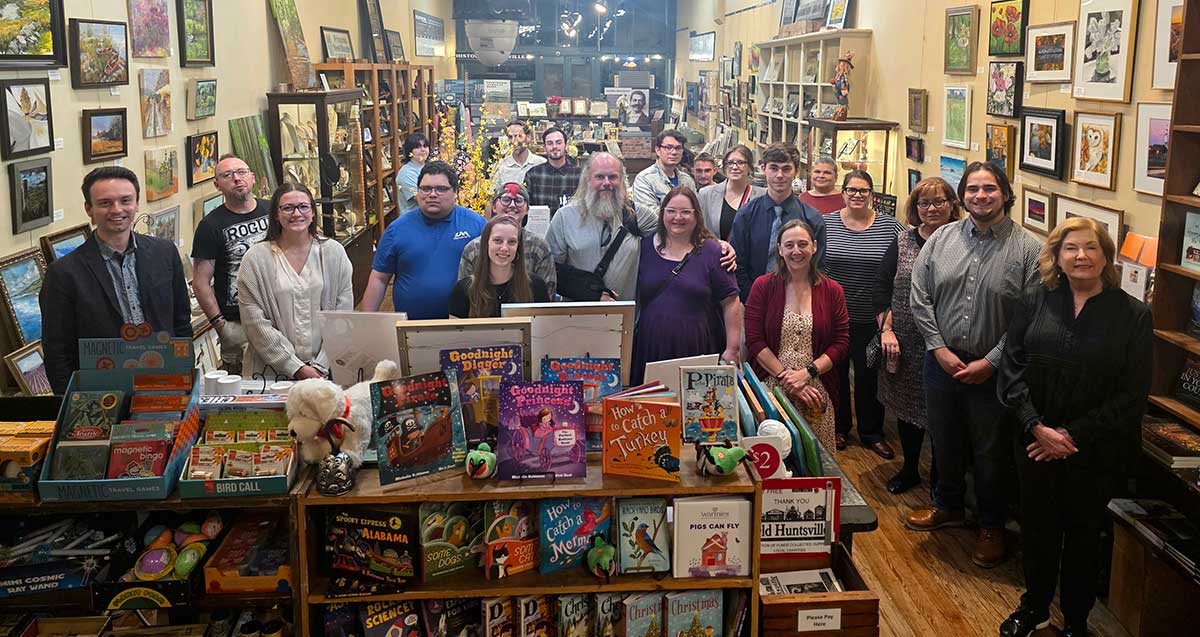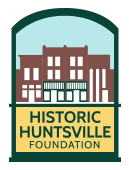UAH History Students Explore How the Past Lives in the Present
A UAH intern reflects on an evening of connection, curiosity, and community at the Historic Huntsville Museum.
by Rebecca Heaton, UAH Public History Intern
Last week’s “Night at the Museum” was more than a social gathering for UAH history students and alumni—it was an opportunity to see how history lives and breathes in our community. As a UAH history intern working with the Historic Huntsville Foundation, I had the privilege of watching classmates, professors, and graduates explore the exhibits at the Historic Huntsville Museum with the kind of curiosity that turns research into real-world connection. The National Park Service listed the Historic Huntsville Museum to the Reconstruction Era National Historic Network in 2023, and is Alabama’s only museum listed to the network.
Students gathered inside Harrison Brothers Hardware, home of the Huntsville History Museum and one of Alabama’s oldest retail establishments, where the past hangs on every wall. Between shelves of local art and displays of vintage tools, we stood surrounded by the very history we spend our days studying in textbooks. As we mingled through exhibits like Justice for the Johnsons and The American Signature Quilt, it struck me how creatively HHF brings together preservation, storytelling, and education. Each display tells a local story, yet each resonates far beyond Huntsville. Students gathered around the American Signature Quilt and it was fascinating to see how this priceless artifact sparked such lively discussions about achievement, memories, fashion trends, and celebrity culture of the twentieth century. A simple artifact of fabric had the power to connect generations of students, professors, and alumni. In preserving a piece of the city’s cultural heritage, HHF provided a space for a new generation of historians to see the discipline as something more than what’s written in a textbook. Each exhibit in the museum inspires conversation and shows us that history is something we live with every day.


Students and alumni swapped stories about favorite local landmarks, the tenuous job market, their latest projects, and insights into how Huntsville’s transformation—from cotton farms to rocket city—reflects broader currents in American history. The tone was uplifting and cheerful, yet thoughtful—exactly the balance HHF reflects in its community work.
Inside the museum, research, interpretation, and preservation bring people together. The exhibits encourage communities to see their past as a shared inheritance rather than a static record. I was amazed how many students had never been inside Harrison Brothers Hardware Store, and I wondered how their perspectives shifted when they left.
As an intern, I’m learning that this kind of public engagement is the heart of what makes history meaningful. Seeing my colleagues interact with the exhibits reminded me that the stories preserved here—about justice, ingenuity, resilience, and everyday life—can shape the way Huntsville defines itself today.




